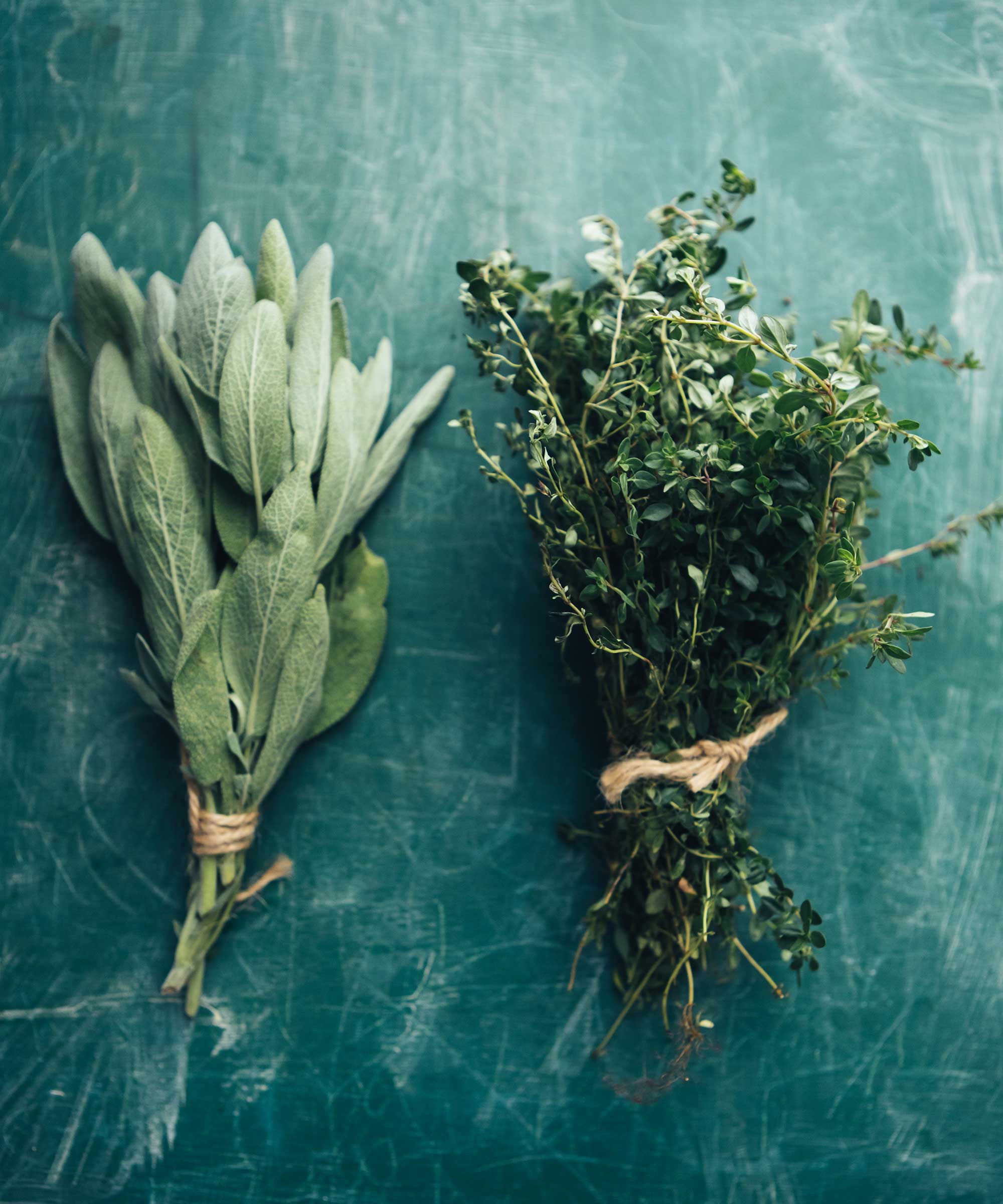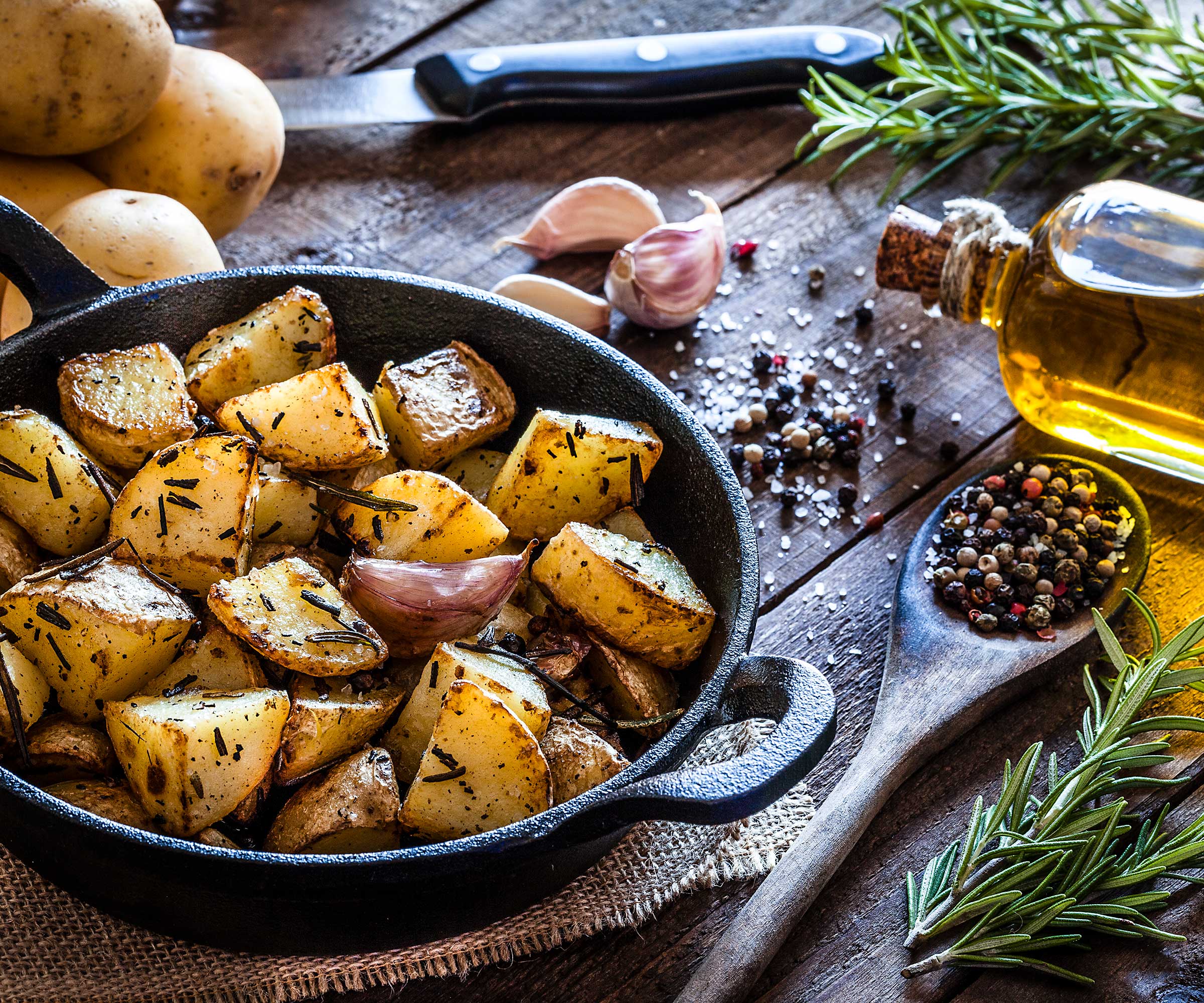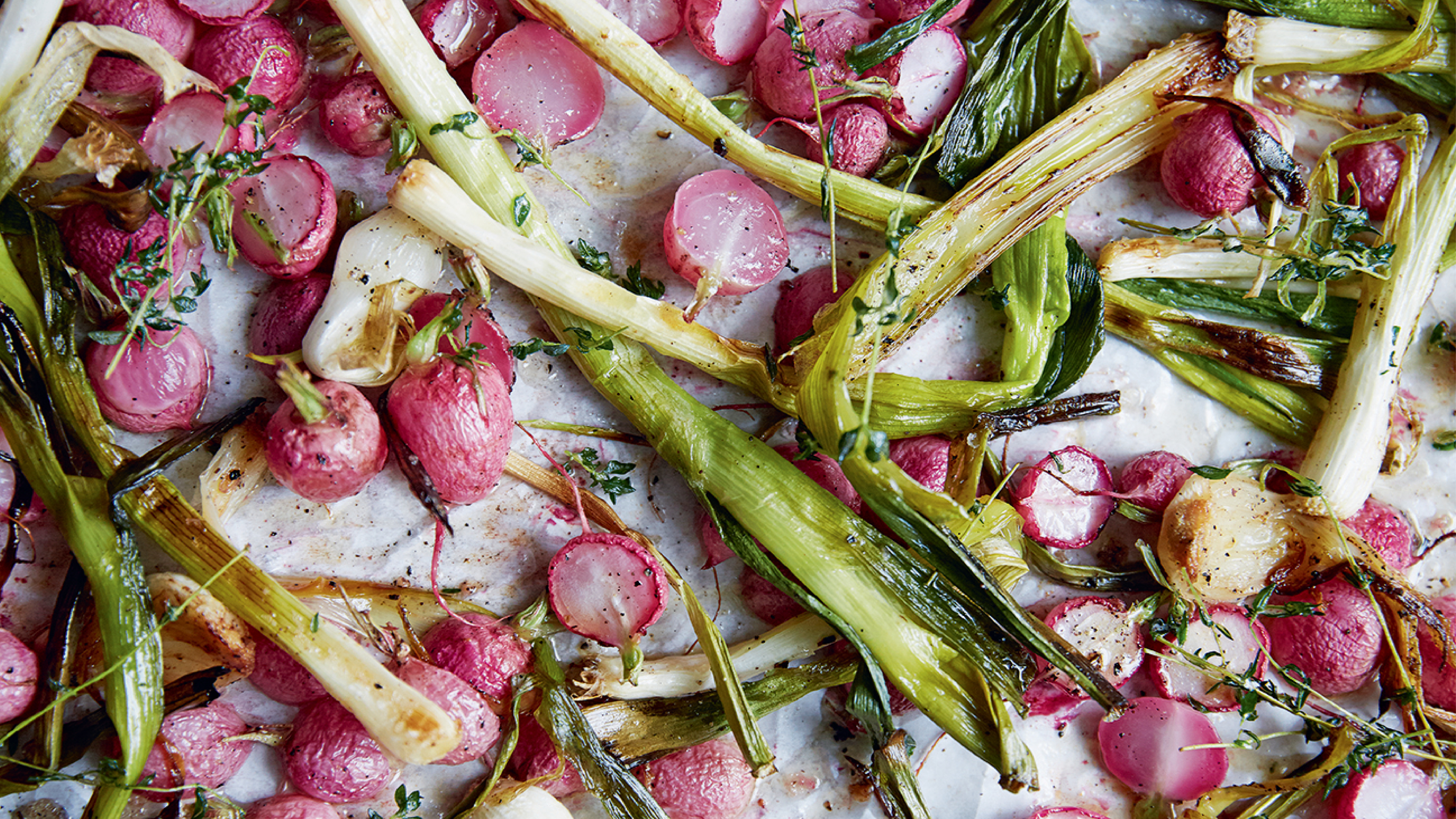How to harvest winter herbs for use in your Christmas cooking – tips for thyme, sage, and more
Elevate your festive recipes with homegrown herbs using this pro advice


Many would agree that one of the best parts about the festive season is the food. Whether you're planning on feeding the masses or enjoying a more peaceful feast for just one or two, there is a lot to look forward to.
From cooked meats and piles of roast veg to sumptuous puddings and sparkling drinks, we all have our favorites from the traditional, seasonal fare. And, adding homegrown herbs is an easy way to make these tasty treats extra delicious.

Many herbs can be used fresh or dried
5 winter herbs for Christmas
The pros share their tips for harvesting and using herbs throughout the festive season.
1. Rosemary

Combine rosemary with garlic to flavor roasted potatoes
Rosemary can be harvested all year round, which is perfect for holiday cooking, says gardening expert Sean Lade. What's more, regularly pruning rosemary encourages healthy regrowth and keeps the plant in shape, he adds.
In the kitchen, rosemary pairs beautifully with meat dishes like roasted turkey or lamb – and it can also elevate your roasted potatoes, Sean continues. 'The aromatic, earthy rosemary flavor is a quintessential addition to your holiday culinary creations.'
While you can use rosemary fresh, it can also be dried and stored for later use.
'To dry, hang stems upside down out of direct light in a room with good air circulation and low humidity,' writes Allison Vallin Kostovick in her book The Garden Maker’s Book of Wonder (available from Amazon). 'Don’t tie stems together too tightly, as mold can grow if there is no airflow. Dry smaller stems on screens or racks.'*
Top tip: Trimmed branches of rosemary can also be used as part of your festive decor, Sean says, where it will infuse the air with its delightful scent.

Sean Lade is the managing director of Easy Garden Irrigation, an industry-leading BALI-accredited company. Sean holds in-depth expertise in gardening and horticulture, with a focus on designing efficient irrigation systems. His solutions grace gardens and nurseries across the UK, embodying an environmentally-conscious approach to water usage.

Allison Vallin Kostovick is a longtime gardener and the creator of Finch + Folly, a popular educational website with advice and articles for gardeners of all skill levels. Allison lives in New Gloucester, Maine, with her husband and children.
2. Sage

Sage has a strong, savory taste
Sage's earthy, aromatic flavor pairs wonderfully with pork dishes and is an essential ingredient for homemade stuffing, Sean says.
In her book, Allison explains how to harvest and dry this fragrant herb:
- Cut the fresh, lighter green outer leaves, leaving the woodier stems to encourage bushier plants.
- Gather in small bundles and hang them upside down in a well-ventilated, dry location for about two weeks.
- Once the bundles are brittle to the touch, store them in airtight containers, keeping the leaves whole and crushing only when needed.*
Sage leaves can also be used fresh in some recipes.
3. Thyme

Thyme is a versatile herb – and one of my favorites
'Thyme is a perfect herb for Christmas day dinner,' says Sean. He suggests using it to season your roasted meats and stews, or to make herb-infused butter.
It can also provide a botanical garnish to festive tipples, and is a delicious addition when roasting root veg. Thyme also pairs well with lemon in baked goods; think cookies, cakes, and pies.
Thyme can be harvested year-round, although you should avoid taking too many stems at one time. It can be used fresh or dried.
4. Parsley

Freshly-chopped parsley adds a delicious, herby flavor to sauces, salads, and more
Outdoors, parsley dies back over winter. But, if you grow pots indoors or in your greenhouse, you can continue to use it in the kitchen.
'To harvest parsley, pick the outer leaves regularly, allowing the inner leaves to continue to grow,' Sean instructs.
It's commonly used fresh, and finely chopped. 'Sprinkle it over your main courses, add it to salads for a burst of flavor, or use it to make delicious herb butter,' Sean recommends.
'For best flavor, grow the flat-leaf varieties,' recommends Allison in her book. 'The curly variety is often sidelined on the dinner plate as a garnish more than a tasty meal addition.
'After harvesting, dry and wash the sprigs,' she writes. 'Loosely roll them in a tea towel or in paper towels and place in a resealable plastic bag for up to a week. Or, place freshly cut stalks in a jar of water and store in the refrigerator.'*
Top tip: 'Don’t simply compost the stems; toss them into the freezer and use later to flavor stocks and soups,' Allison writes.*
5. Bay

Bay grows well in a pot
Bays are beautiful evergreen trees that are perfect for patio pots. And their leaves make a useful herb in the kitchen.
To harvest, simply pick off unblemished leaves before washing them. Don't remove more than one-third of the foliage at one time to avoid stress on the plant.
Note that fresh bay leaves can have a bitter flavor. So, hang them up for a few weeks to dry out before use. Whole, dried leaves can be added during the cooking stage to enhance stews, mulled drinks, and bread sauce, and then removed before serving.
FAQs
Can you grow winter herbs indoors?
Yes, some herbs can be grown successfully indoors if you provide the right conditions. Most prefer plenty of light and well-draining soil.
What tools do you need to harvest winter herbs?
Most winter herbs can be harvested using a pair of sturdy pruners or scissors, ensuring they are sharp and clean. This makes it easy to cut precisely through any woody stems and avoids accidentally uprooting or causing damage to the remaining plant.
Love the idea of using homegrown produce in your festive feast? Next year, perhaps consider growing carrots, potatoes, or even Brussels sprouts, to make your Christmas dinner even more special.
*Excerpted from The Garden Maker’s Book of Wonder © 2023 by Allison Vallin Kostovick. Used with permission from Storey Publishing.
Sign up to the Homes & Gardens newsletter
Design expertise in your inbox – from inspiring decorating ideas and beautiful celebrity homes to practical gardening advice and shopping round-ups.

Holly started writing about gardening five years ago, and she is a regular contributor to Homes & Gardens. She has also written many gardening features for Woman & Home and Real Homes, too. She has previous experience as a professional gardener, where she helped to plant and maintain private gardens. Holly has also looked after allotment plots over the years and loves to grow her own flowers and veggies from seed. In her spare time, she enjoys visiting local gardens, botanical drawing, and tending to her ever-growing collection of houseplants.
-
 Roasted radishes and scallions
Roasted radishes and scallionsAn easy, elegant side that brings out the softer, sweeter side of spring vegetables, it's the perfect addition to your spring table
By Alice Hart
-
 Raw cauliflower, pea and herb salad
Raw cauliflower, pea and herb saladFresh, zesty, and full of texture, this wholesome cauliflower recipe is a vibrant addition to any spring menu. Here's how to make it
By Alice Hart